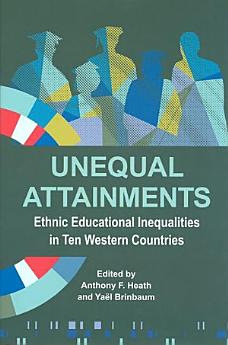Unequal Attainments: Ethnic educational inequalities in ten Western countries
About this ebook
The book investigates the educational careers of the second-generation groups using large-scale national datasets and harmonised analyses of outcomes in order to identify patterns of success and failure in education and the mechanisms underlying such inequalities. It examines whether such differences can be attributed to immigration policies of the receiving countries, the structure of the education system, the poverty of the sending countries, their cultural differences from the destination country, the degree of 'positive selection' of the migrants, or to more specific characteristics of particular ethnic minorities. It provides a rigorous description and quantification of ethnic inequalities in education and makes important progress in explaining existing inequalities.





